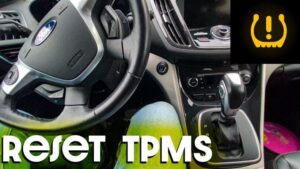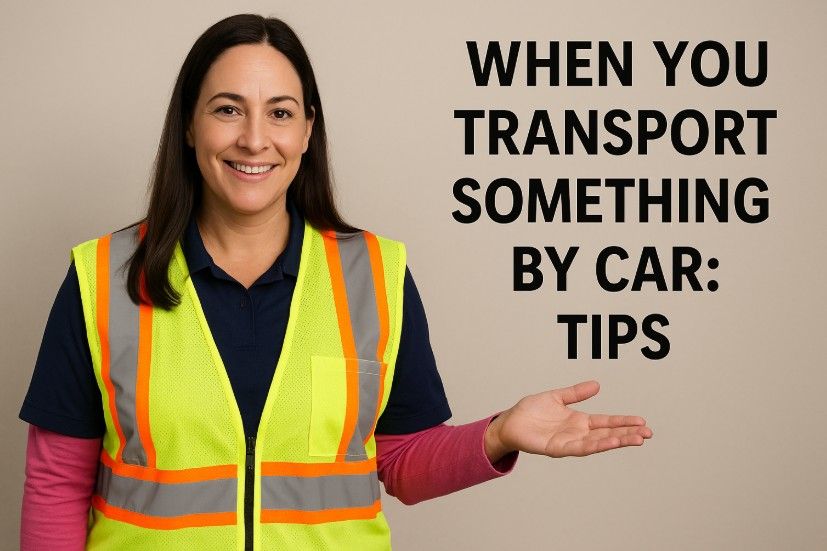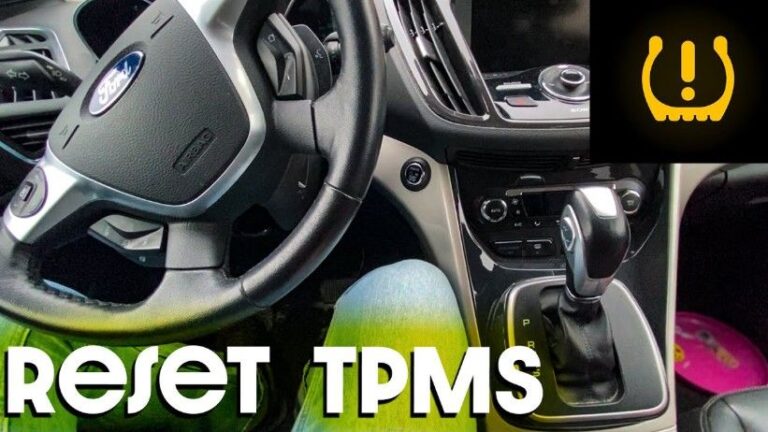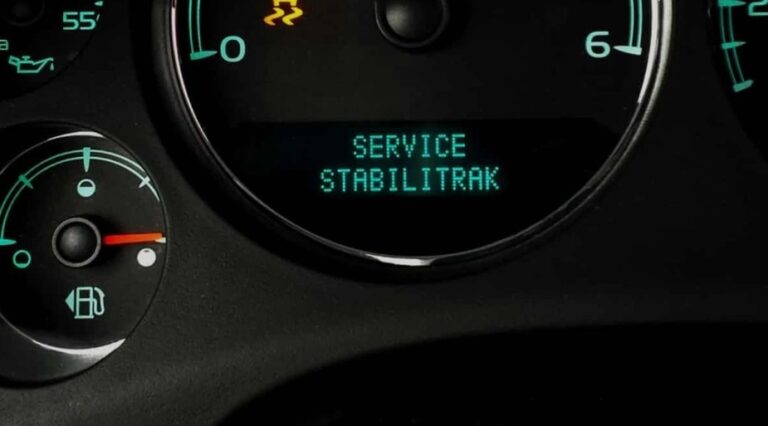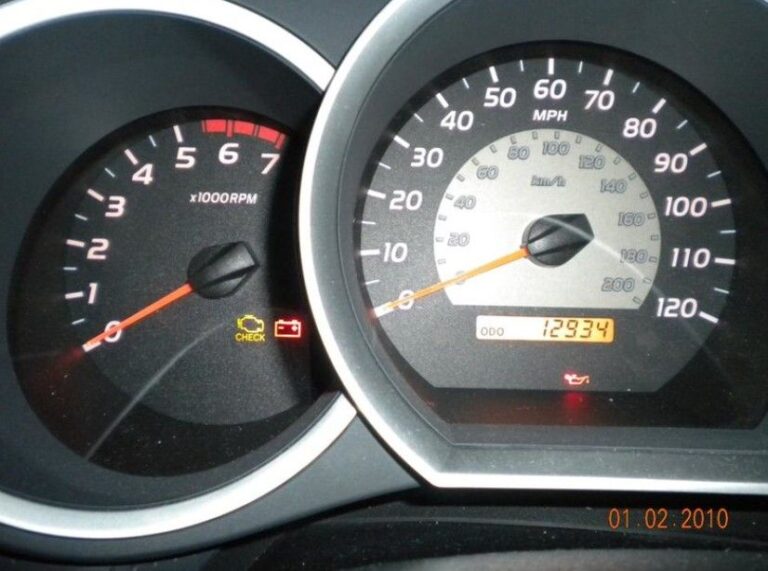If you think tossing a few boxes in the backseat is all it takes to move your belongings by car, think again. According to Rena Monrovia, a veteran in the U.S. transportation industry, careless loading and transport methods are the silent culprit behind countless on-road accidents, vehicle damage, and insurance headaches.
I recently had the opportunity to speak with Rena, who has spent over two decades consulting for homeowners, packers and movers, and even long-haul freight operators. Her expertise spans everything from weekend apartment moves to managing short-haul cargo on rural routes. In this article, we break down her essential advice for anyone transporting goods by car — whether it’s a few fragile boxes or an entire room’s worth of belongings.
Rena Monrovia on When You Transport Something by Car
“The number one rule? Secure it. Always,” Rena said during our conversation. “Even the smallest item can become a projectile if you’re forced to brake suddenly.”
She shared a striking example: A client once transported an unanchored toolbox that slid forward during an emergency stop, cracking the dashboard and triggering an airbag.
Whether you’re a homeowner shifting furniture or someone hauling groceries, the foundational principle remains the same: everything must be anchored, padded, or confined.
Real-Life Mistakes and Lessons Shared by Rena Monrovia
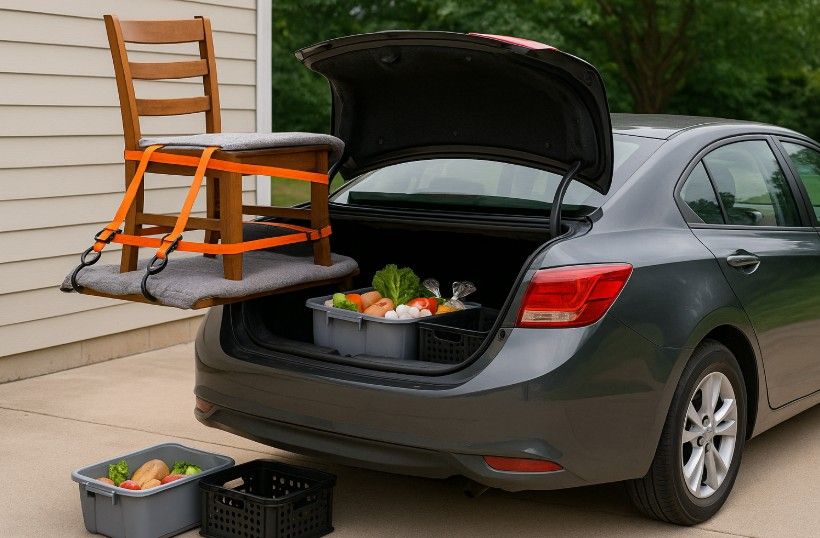
Rena outlined a few scenarios where things went wrong due to negligence:
- A mirror loosely placed on the back seat shattered from a door slam.
- A dog in the car, unrestrained, jumped into the front seat and caused a fender bender.
- Grocery bags without separators tipped over, spilling liquids onto electronics.
“These things aren’t rare,” she warned. “Most people don’t realize how dangerous simple carelessness can be.”
Best Practices for Different Types of Cargo
1. Furniture and Heavy Loads
Rena advises against overloading sedans. For medium to large furniture:
- Use tie-downs, bungee cords, or ratchet straps.
- Place furniture blankets between surfaces to prevent scratches.
- Distribute weight evenly to avoid tire pressure imbalance.
2. Groceries and Everyday Items
- Use crates or cargo bins.
- Place heavy items on the floor of the trunk or rear seat.
- Keep delicate items (eggs, glass bottles) in cushioned containers.
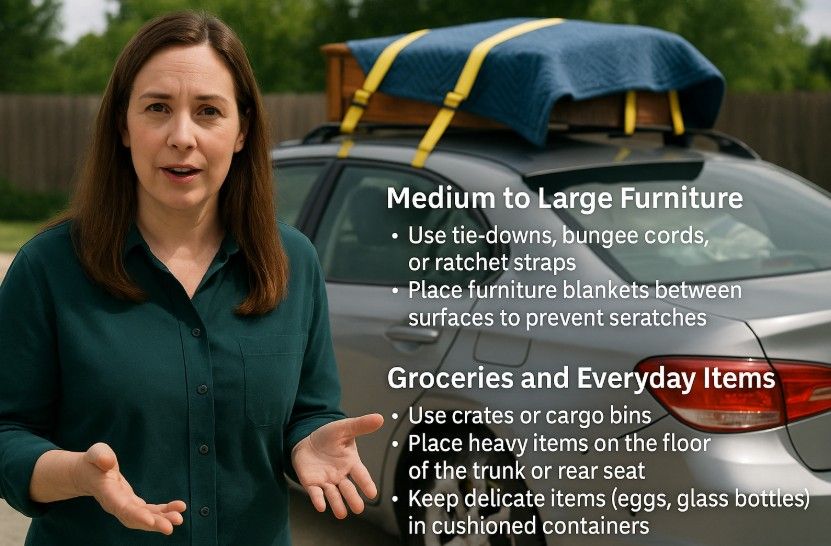
3. Pets
“A pet roaming freely in a moving car is not cute; it’s dangerous,” Rena emphasizes.
- Use crates or specially designed seat-belt harnesses.
- Never let them ride in the driver’s lap.
4. Electronics and Fragile Items
- Always transport electronics in their original padded packaging if available.
- Keep them out of direct sunlight.
- Avoid stacking anything on top.
A Legal and Insurance Perspective
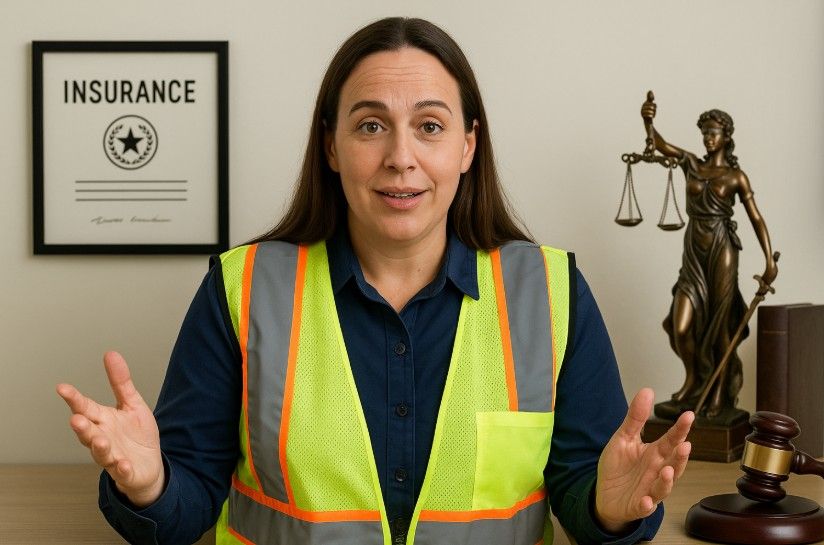
According to Rena, one of the biggest shocks people face is that many insurance policies won’t cover cargo damage if it results from improper loading.
“If you slam the brakes and a TV cracks your windshield, your insurer might say it was preventable and deny the claim,” she explained.
She also pointed out that in many U.S. states, drivers can be ticketed for unsecured loads, especially if items fall out and cause road hazards.
Rena Monrovia’s Essential Checklist Before You Drive
Here’s a quick rundown Rena suggests all drivers follow:
Is all cargo anchored or contained?
Can I see clearly through all windows and mirrors?
Is the heaviest load placed on the floor and centered?
Is there any chance something can roll, slide, or tip?
Have I double-checked tie-downs and straps?
“If you can answer yes to all of these, you’re in decent shape,” she said.
Tailored Advice for Different Vehicles
Not all transport tips are one-size-fits-all. Rena provided insight into how different cars should handle loads:
- Sedans: Use trunk space wisely. Keep it low and balanced. Avoid stuffing things behind the driver’s seat.
- SUVs and Hatchbacks: Cargo nets are crucial. Use vertical dividers to separate items.
- Pickup Trucks: Use a tonneau cover or tarp to prevent items from flying off. Secure everything with rope or ratchet systems.
- Roof Racks: Avoid overloading. Check manufacturer weight limits and recheck tie-downs at stops.
Going the Extra Mile: Ethical Transport
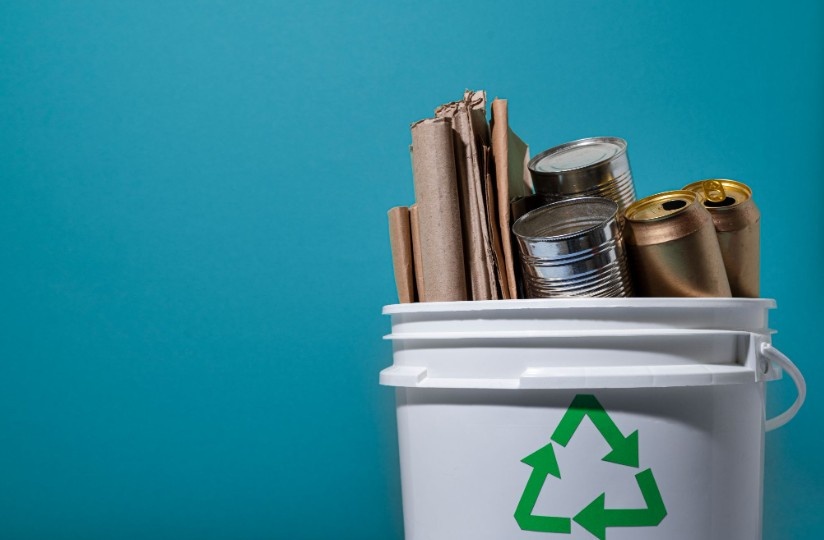
Rena also champions responsible and eco-conscious transport:
- Avoid plastic wraps where possible. Use reusable bins.
- Don’t make multiple trips if one well-planned one will do.
- Donate unused items instead of dumping them on moving day.
“Transport is more than just moving things; it’s about moving responsibly,” she added.
What Most People Miss
According to Rena, most drivers forget about two crucial factors:
- Weight Balance: Even distribution prevents overloading one side of the vehicle, which can affect braking and cornering.
- Loose Interiors: Sunglasses, coins, phone chargers – these minor objects can cause major distractions or injuries in a sudden stop.
Transporting with Intent
Transporting something by car isn’t just a physical task — it’s an exercise in attention, responsibility, and preparation. Rena Monrovia’s when you transport something by car tips boil down to one golden rule: “When you transport something by car, make sure it won’t move unless you move it.”
Next time you open your trunk or load the backseat, pause and ask yourself: Would Rena approve?
Because if you think like her, you’ll drive safer, smarter, and with a whole lot less to worry about.

